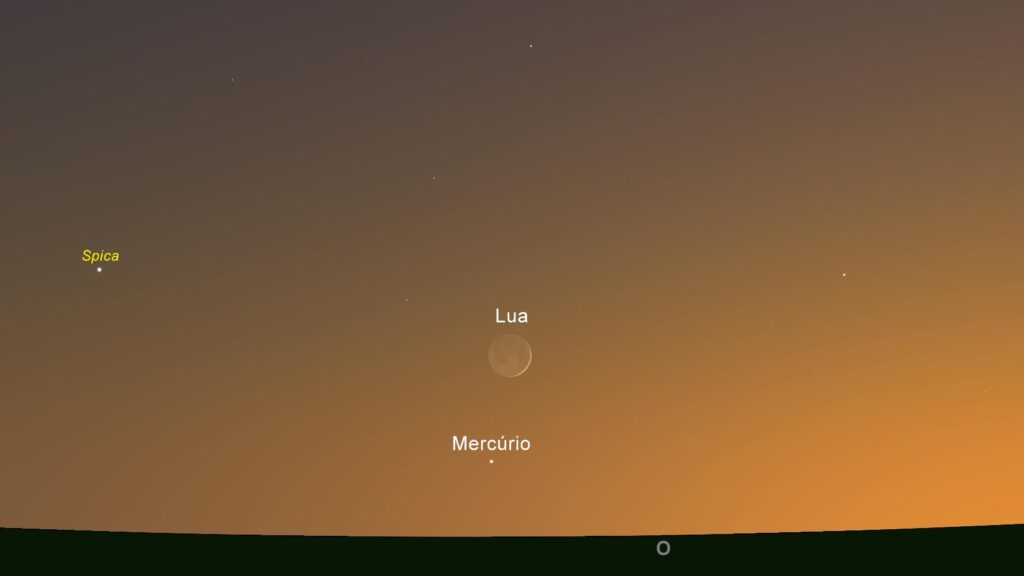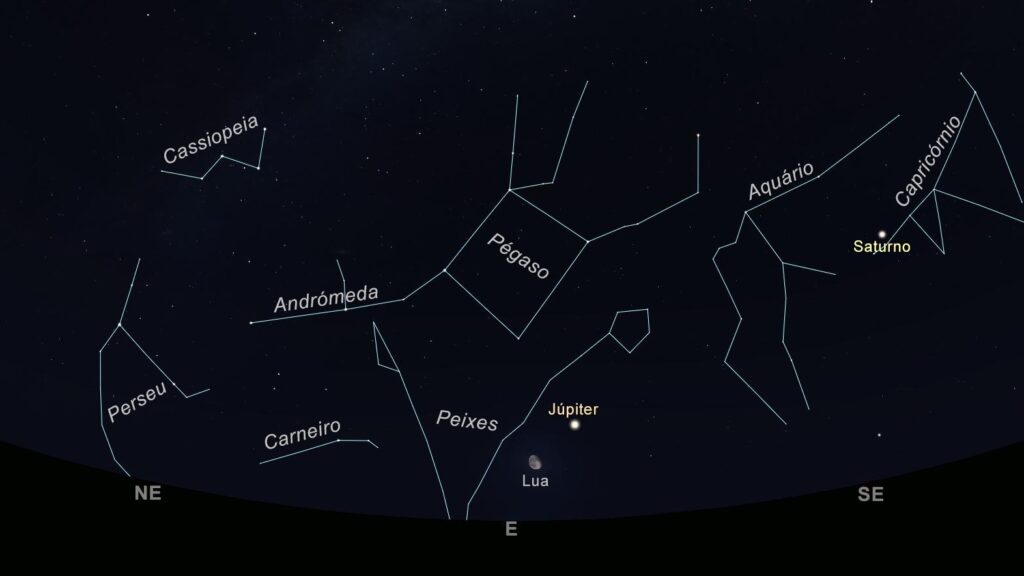In August, we can already feel the days getting considerably shorter. On the 1st, the Sun, set around 20:45 in mainland Portugal, but on the 31st, it set around 20:00.
This also affects the visibility of the planets. On the 1st, the planet Saturn was born shortly after dark, around 21:30 pm, but by the end of the month, it is already visible as soon as the Sun passes below the horizon. But during August, we will have the opportunity to see all 5 planets visible to the naked eye.
Mercury has just left the direction of the Sun and begins to see itself at dusk. The best time to see it will be between the 13th and 19th. Even so, this planet will be at most 10 degrees above the horizon (with the arm outstretched, it corresponds more or less to the space occupied by a closed fist) and will only be visible between half an hour and 45 minutes. To increase the chances of seeing Mercury, it is recommended that you do so in places with the horizon facing west completely unimpeded.
Jupiter and Mars will not be visible at dusk, but as the month goes on, they rise earlier and earlier. The largest planet in the Solar System is born at 23:15 pm on the 1st, but will be visible at 21:15 pm on the 31st. Mars follows suit, albeit a little slower, being visible at 01:15 am on the 1st, and around midnight. night of the 31st.
As for Venus, it is already approaching the Sun – it was born around 05:00 on the 1st, and at 06:00 on the 31st.
The Moon, which moves a little less than a hand a day in the sky, was in a crescent on the 5th. A week later, on the 12th, it reaches the full moon phase and passes at just 5 degrees from Saturn.
Unfortunately, this is also the day when the Perseid meteor shower, one of the biggest “star showers” of the year, peaks. So while this shower typically has up to 100 meteors visible per hour (in dark skies), the Moon's brightness should cut that number in half.
In cities, because of light pollution, the number of meteors visible is about 10% of the number expected in dark skies, that is, only 5 should be visible per hour. But it's not all bad news, as the Perseids are rich in “balls of fire” (bigger and brighter meteors), so it should be worth spending an hour looking at the sky.
On the 14th, Saturn reaches opposition, meaning the Sun, Earth and Saturn will be in line, with Saturn on the opposite side of the sky from the Sun.
On August 15th, the beginning of vacation for some and the end for others, Mercury will be at its highest point, at dusk, and a few hours later, the Moon passes at 6 degrees of Jupiter. On the 19th, the day when the Moon reaches the waning phase, it passes 3 degrees of Mars.
Then we have to wait until the 25th, when our satellite, in a very thin wane, passes at 7 degrees of Venus, just before dawn. The 27th is new moon day and on the 29th we have the observation challenge of the month: A very thin crescent of the Moon will be at 4 degrees of Mercury, but the planet is already approaching the Sun, in the sky, and it should only be visible for less than half an hour, just after sunset.
Good remarks!

Author Ricardo Cardoso Reis (Porto Planetarium and Institute of Astrophysics and Space Sciences)




















Comments